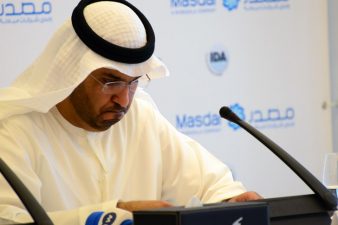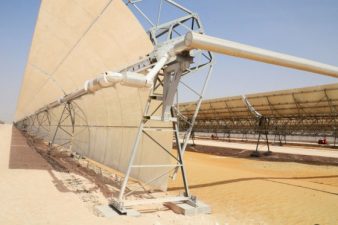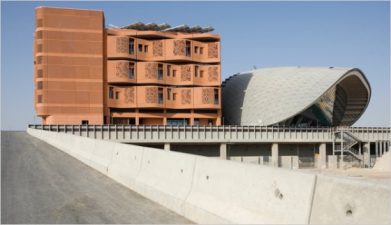
When Masdar, the space-age city in Abu Dhabi was in its planning stages, architects from Europe, building suppliers, advisors and energy creators were agog. A lot of purportedly “green building” was to take place and billions in contracts for wild dreams were to be awarded.
It was the same sort of energy surrounding Better Place the promised all electric car company that got almost a billion in investment which was squandered in all the wrong places. While Better Place was a good idea with a bad plan, Masdar was a bad idea with a good plan. With Masdar I always felt it was a story of the king not wearing any clothes, or like the meltdown of Amy Winehouse. All the players in the story were more than happy to go along with the lie because it was in their interest for the project to go ahead.
Masdar, an $18 billion experiment in sustainable living, was supposed to be the world’s first zero energy city. No building can be zero energy. Every building, village, town, city we create cannot be sustainable or perfectly environmental or zero energy. When we build on the environment, once a desert, forest or grassland, it is changed, maybe forever.
Masdar was also supposed to be liveable. When we sent a reporter there some years ago no people were in sight. We had one dispatch once from a student who was staying there and when she talked with us it felt like she was talking to from a closet.
Green building technology in the eyes of the planet is a bit of an oxymoron in my opinion especially when the people running the technology show are coming in with Western Silicon Valley ideals that are really incompatible with how I think future cities should look in the Middle East.
Fast Company points out the problem: “The Masdar City model seems difficult to reproduce: too isolated, too expensive, too empty. The embryo town appears rather as a symptom of the obsession of a state with regard to its future. What will become of this territory, once the hydrocarbon reserves underneath its soil are depleted? In response, the frenzied builders attempt to inscribe life in a permanent fashion on a land that seems hostile to human existence. It is about facing the fear of death by building quickly (an “instant city”), to help transition to an Emirates that is a techno-ecological leader. Masdar City is meant to be the laboratory. Opening soon . . . one day.”
Or never?
If we want to create progress in the Middle East in green building, architects, planners and investors need to move away from trendy ideas (shipping containers – read why we think they suck!) to going back to relationships with local traditions and cultures.
A few good places to start building greener in the Middle East:
Hassan Fathy was an Egyptian visionary architect who used local building materials to create relatable, affordable, comforting green buildings.
Mashrabiya is an aesthetic concept in the Middle East which creates shade and privacy and mitigates heat islands passively in buildings.
The Windcatchers of Yadz offer a fabulous, local solution to cooling rising temperatures that can go up to 50 degrees C in the Middle East.
Start with these few resources for a more modest approach before a layer of green technology or western ideology approaches Middle East architecture.



